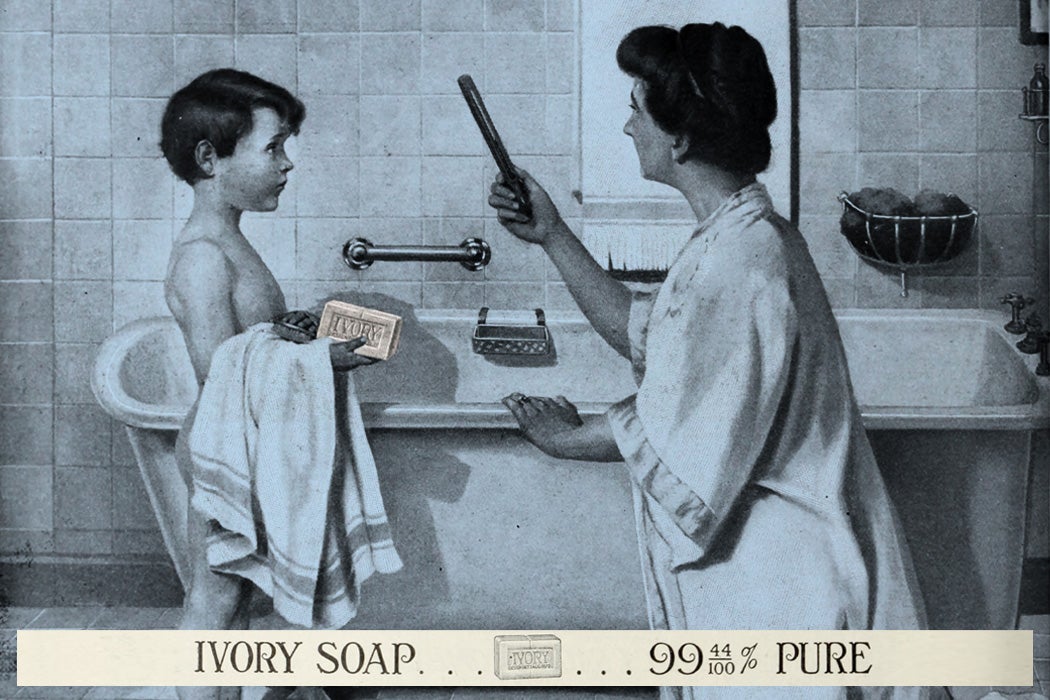The phrase “cleanliness is next to godliness” goes back at least as far as a 1778 sermon by John Wesley. But, as religion and history scholars Richard J. Callahan, Jr., Kathryn Lofton, and Chad E. Seales explain, the phrase took on new meaning in the late nineteenth and early twentieth centuries as soap companies marketed their products in distinctly religious terms.
Before the Civil War, the authors explain, a kind of “cleanliness” was important to Christian respectability, but this was as much about carefully ironed clothes and an upright self-presentation as the absence of dirt and body odor. Up until the 1870s, people typically used only hot water for cleaning. Soap was an optional accessory, not a staple. But, by the 1930s, Americans placed soap second only to food as the most important consumer product. This shift was one of the first victories for a concerted consumer marketing campaign, and it was also a victory for a particular view of Christianity.
In a nation where companies could comfortably assume they were selling their products to Protestant consumers, soap companies drew on religious language. Ivory Soap got its name from Psalm 45: “All thy garments smell of myrrh and aloes and cassia out of ivory palaces whereby they have made thee glad.” The company placed the first ad for Ivory in a Christian weekly, and it kept up a close relationship with Protestant institutions. In 1896, social gospel theologian Washington Gladden spoke at a P&G dividend meeting, praising the relations “between employer and employees in Ivorydale, between the directing minds and helping hands.”
Ivory wasn’t alone. In the 1880s, the John H. Woodbury Company began a “Facial Purity League” for face-cleaning products. Callahan, Lofton, and Seales describe a marketing campaign that included “campaign buttons and membership contracts describing in vivid Christian language the connection between soap and moral worth, between purchase and regeneration.” Another soap company, Wool Soap, promised to donate a penny to the Women’s Christian Temperance Union for every Wool Soap wrapper returned to the company.
Soap markers also borrowed tactics from religious proselytizers. The Cleanliness Institute, founded in 1927 by a soap industry association, produced pamphlets designed to teach Americans new cleanliness rituals. The “Book About Baths,” for example, took 24 pages to explain correct methods for morning bathing, after-work baths, bathing for children, and baths of different temperatures. Newspapers were enthusiastic about the Institute.
Weekly Newsletter
“As it is with godliness, so with cleanliness, there are many millions without the desire to repent and be laved,” the Detroit Free Press punned. “We must continue to ‘sell’ the world on cleanliness.”
Callahan, Lofton, and Seales explain how the push to sell soap depended on, and contributed to, a larger ideology. It brought together ideas of progress, the fight against prostitution and alcohol, and an optimistic, self-improving Protestant theology under the rubric of cleanliness. In an early example of the growing importance of marketing in a consumer capitalist economy, companies were selling much more than soap.







